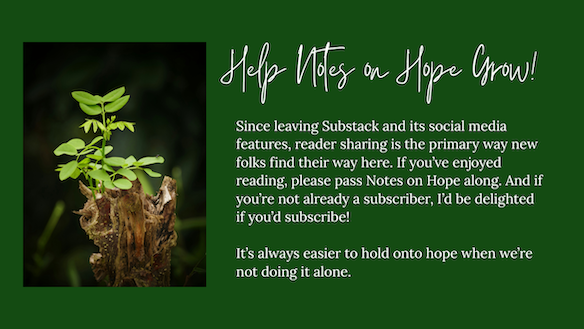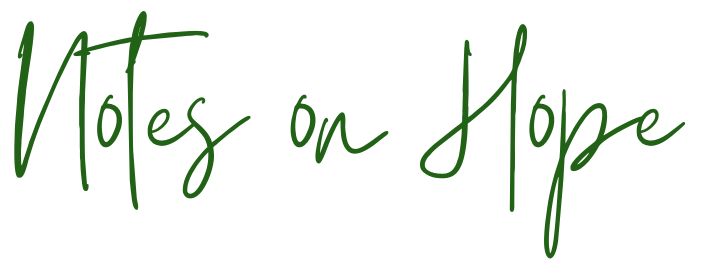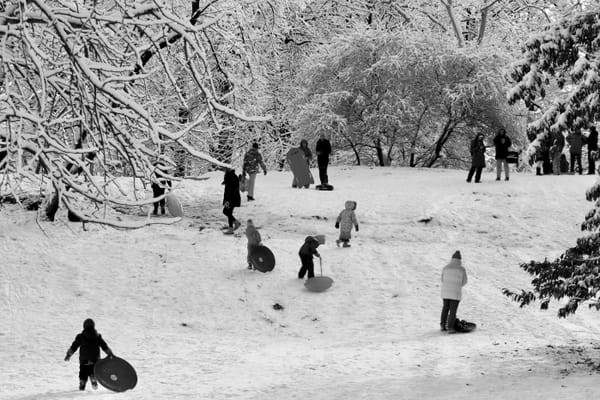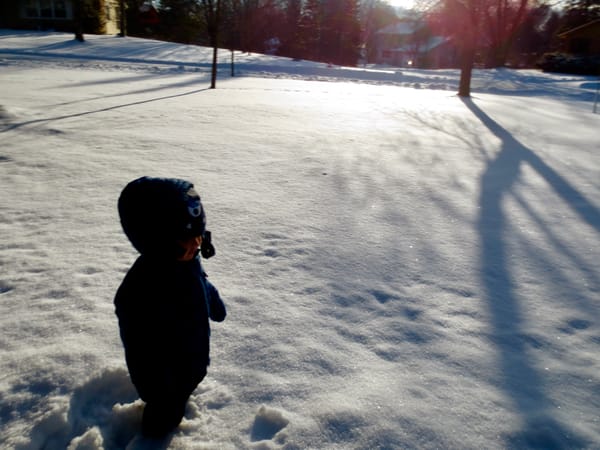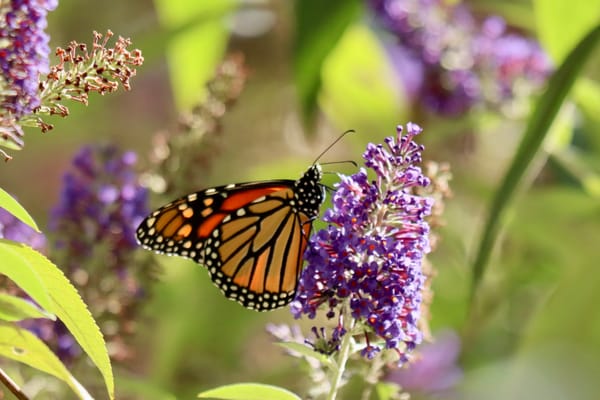Finding Our Footing
On the myth of milestones and an embrace of unsteadiness

“When the wind blew,
You couldn’t stand still—
Under you, sand shifted;
Around you, dunes rose
And fell in waves
Like the still-undiscovered sea.
You had to change your footing.
You had to move, too.”
~Gregory Orr
After I wrote about the transition from summer to fall last week, the temperature in New York dropped by about twenty degrees from balmy 90s to breezy 70s, offering an unusually gentle bridge between seasons. If you had a chance to read last week’s note (or this note from last August), you know that I find this time of year to be fraught. As teachers know well, the end of summer and the beginning of fall is a period of transition, not only in the seasons and in our routines, but also in the range of emotions that always accompanies change. When we navigate these shifts with children well, we attend closely to the establishment of rhythms and rituals that will provide a sense of grounding, in addition to the experiences that offer the excitement of novelty and new beginnings. We acknowledge for children that transitions are often marked by double-sided emotions—enthusiasm that sits beside worry, exuberance that is coupled with sadness, and energy that is punctuated by exhaustion.
When young children start school, teachers remind parents that new beginnings can be both thrilling and overwhelming. One does not negate the other. And we remind them that they will likely see this duality manifest in behaviors that appear contradictory. The first signal of growth is often regression. We move backward in order to move forward. It is common for children to move through the school day with giggles and apparent gladness only to burst into tears at the first sight of a trusted caregiver, not because they didn’t truly relish the day but because the effort of newness, even when it is welcome, also yields a deep need for familiarity.
Given this complexity, I’ve always bristled a little at the word, “milestone.” It feels much too tidy and solid to capture the true nature of growth and learning. Certainly, there are developments that crystallize in clear, recognizable moments—the first steps, the first words spoken, the first words read, the first day of preschool, kindergarten, high school, and college. Surely, it is exciting and notable to reach these threshold moments and to be able to name and memorialize them. But the truth is that each of these expressions of growth is so much more than a single moment.
Often, before children crawl we will see them on all fours rocking, as their bodies and brains muscularize for the motor transition ahead. Before they speak, we spend many months babbling back and forth with them and interpreting fragments of sounds that increasingly approximate language. So too for each transition we think of as a milestone moment from infancy into adulthood. Each marker of a new phase sits on a continuum of effort and emergence. A new skill or a new beginning may appear to manifest as something we can demarcate with clarity, but these bright dots on our timelines are always evidence of ongoing work and change.
Most of our growth is like the imaginal discs of the butterfly—clusters of cells that hover unseen beneath the caterpillar’s skin, preparing for and beginning the transformative process long before any evidence of wings or even of change is visible. The so-called milestones of development are rarely as abrupt as they may seem.
Additionally, even the most exhilarating developmental achievements are usually also marked by some degree of ambivalence. As each phase of motor development brings new possibilities for independence, children often go through a period of seeking more physical connection—reassurance that their newfound ability to run away will not remove them too abruptly or completely from our care. They dash down the road to assert their hard-won freedom, but also to be reassured that we will catch them in our arms when they run back to us. When they learn to read, children often wonder if we will still read to them. And, even in the turbulent drive for autonomy that often dominates the stereotypical vision of adolescence, children return to seek connection and closeness at unexpected moments. The psychologist, Lisa Damour, compares these love taps to the brief return to the wall of the pool that allows a new swimmer to catch their breath.
Like the caterpillar, whose immune system vies for dominance over its own transformation, attacking the discs until the change becomes too overwhelming to resist, we, too—children and adults—usually move through change with a mix of eagerness and reticence, tugging us forward and backward at the same time. Alexandra Middleton writes,
“What I like about imaginal discs as metaphor is that they disrupt the common narrative of metamorphosis merely as transformation: from one form to another. Instead, form itself is abandoned, all the way down to the most essential units. Units that were there all along, previously unremarkable and unnoticed yet base in the sense of foundational, become the driving force of a structural and physiological evolution.
I also find the immune system’s response—to attack these imaginal discs—to be oddly endearing and relatable: sometimes we do not recognize the base units of our becoming as part of ourselves. Sometimes our instinct is to resist, to attack. Sometimes we think our survival depends on it. And sometimes, this instinct is more in service of the survival of a no-longer form we’re still clinging to, than the one we are becoming.”

None of this is to say that growth can’t be purely celebratory at times, or that we should always presume and be on the lookout for shadows within each new accomplishment, but only to serve as a reminder that unsteadiness and its accompanying discomfort aren’t indicators that we are doing something wrong. In developmental terms, periods of growth and transition are described as times of “disequilibrium.” The ability to soak in joy and to take pride and pleasure in growth is important, of course, and there are surely times when change is marked by an unadulterated upwelling of delight and fulfillment. But when we are feeling unsteady and at loose ends, or when we observe others showing signs of such turbulence, making note of this as the natural state of disequilibrium can be helpful. Eliminating the dissonance that disequilibrium creates and returning to the relative balance of homeostasis is one of our most basic drives, physiologically and emotionally. Recognizing and naming this can make it easier to move through uneven terrain and to identify the growth that we’re headed toward, especially when our instinct might be to batten down. In doing so, we can also remind ourselves to proceed with gentleness, both inwardly and outwardly, during periods of change and transformation.
When children are going through these transitional periods, and parents are noticing the challenging and often seemingly contradictory behaviors that emerge in the midst of growth and change, my advice is usually twofold—find ways to give them more independence and choice and also find ways to give them more affection and reassurance. We can’t meet two needs with one solution, and when we are in periods of disequilibrium we almost also have multiple, seemingly conflicting needs. But it is possible to provide more than one thing at a time, even when these provisions seem to oppose one another. A boat avoids capsizing in choppy waters by simultaneously moving with the waves and shifting ballast to reestablish stability. We can do the same in daily life when we recognize that the need to move and to be stabilized are often one and the same. This is true for children and it is true in our adult lives as well.
Though, as I wrote last week, I find that this end of summer time is often marked by disequilibrium for me, just as it usually is for children, this year’s changes feel more pronounced in some ways. My job changed pretty dramatically and unexpectedly this summer, creating a need to shift my footing and reorganize the way I orient myself to my work and to day-to-day life. At the same time, my son is preparing to start high school, and he suddenly feels palpably close to adulthood. Just like the first words and the first steps, this transitional moment seems somehow both startlingly abrupt and undeniably protracted. I think the way in which change often feels both slow and fast all at once is part of what creates our sense of disequilibrium. It is the odd sensation of watching something unfold in the most intimate and microscopic proximity, while also feeling blindsided by that very unfolding.
I had a different essay planned for this week, but one of the things about transitional times is that they usually demand our full attention. And so I find myself lingering here.
On that note, I’m planning to take a brief pause next week in order to honor these final days of August and breathe in all that is both wonderful and wobbly about this particular transitional moment. I'll see you back here, in the pages of Notes on Hope, in September.
In the meantime, I hope that if you are also in a transitional period, you’re able to allow yourself a similar moment to breathe in and adjust your footing. And if you find yourself on more solid ground, perhaps take this opportunity to look around and see if anyone else might need a little help steadying their ship. One of the gifts of steadiness is the ability to act as the wall of the pool for others.
Wishing you the presence to embrace disequilibrium, knowing that it is the beacon of new horizons, and the peace of the plateaus that offer respite along the way,
Alicia
A few things I found helpful and hopeful this week…
- My Kids Are Experts in How Power Works. A beautiful and important essay, written by a teacher, about the way his students understand systems of power and navigate these systems in their own lives.
- How a Group of Parents Defeated Anti-Trans Activists
- Venezuelan Migrants, A Black Church, and an Experiment in Solidarity
- Yikes! The issues with Substack are even worse than I thought. Please read and take this into consideration, especially if you're paying for subscriptions on Substack, which diverts revenue from each subscription to the platform.
- And a beautiful duet that feels like a deep breath
